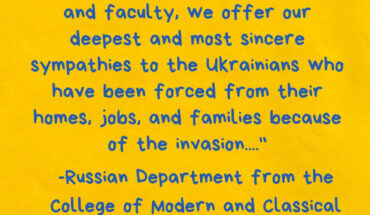George Mason University has created its first “brand profile,” a creative strategy for communication with recruits, students and alumni.
The university will use this profile as a resource for communication and marketing and will phase out the university’s tagline “Where Innovation is Tradition.”
When President Cabrera and Vice President of Communications and Marketing Renell Wynn joined Mason, they began to brainstorm new ideas for presenting the university’s image.
“This identity of who we were and what the character was of this institution were pulled out of that visioning process and put into the strategic plan,” said Director of Creative Services Sarah Seeberg, who was also involved in the process. “It was an opportune time to come up with the brand profile, to assimilate all those attributes, strengths and values and to give the university a tool.”
The 96-page brand profile toolkit is divided into messages, visuals and style and photography. The message section includes four key messages of the university: Mason is making its mark, Mason is driven to serve, Mason focuses on results and Mason stands apart.
It also has six themelines that can be used to represent Mason in various forms of communication to reach an array of audiences: a force for innovation, a new definition of excellence, making discoveries that make a difference, the power of many perspectives, ideas with impact and many paths to success.
“Each [themeline] captures and expresses one or more themes central to the story [Mason] want[s] to tell,” states the brand profile.
According to Seeberg, having a variety of themelines is more versatile then having one required tagline. Seeberg said not everyone in the Mason community embrace dMason’s tagline, “Where Innovation is Tradition” because everybody had different interpretations of it.
“Some of the people in the arts would interpret innovation to be technology, others would say innovation means business,” Seeberg said. “People who were in more fast-moving academic areas would say tradition sounds weighty, it sounds heavy.”
The Mason website is currently undergoing changes as well, including removing the tagline. The brand profile includes the quality of innovation as one of the university’s 12 strengths. This term still represents the character of the university, according to Seeberg.
“We had the first information technology engineering school. We were the first among the studies of Conflict Analysis and Resolution,” Seeberg said. “We were really strong in the forefront of interdisciplinary degrees.”
The visual and style section gives guidelines on official university fonts and standards for using the Mason logo with the official green and gold primary colors.
“We put together three color palettes that all go with that green and gold,” Seeberg said. “We directed them to audience, so there’s a younger one, a more mature serious toned one and there’s a middle one.”
The final section instructs photographers and designers on how to represent Mason in a fresh, new way. The previous photography style would be a grid or collage with multiple, small photos. Now the idea is to focus more on individuals, use fewer photos and make them larger so that the images seem more personal.
“It’s really a style shift in marketing in general. It’s a different style of photography in how we take it, but also in how we use it,” Seeberg said.
There will be training sessions and an explanatory website to help administrators understand and use the brand profile effectively.
“There’s a very active community on campus that does communications, whether they’re development, web masters, or they do marketing and recruiting for people or alumni communications,” Seeberg said. “They’ve all been very receptive and supportive of it. It did exactly what we thought it would do.”
Featured Illustration by Laura Baker




